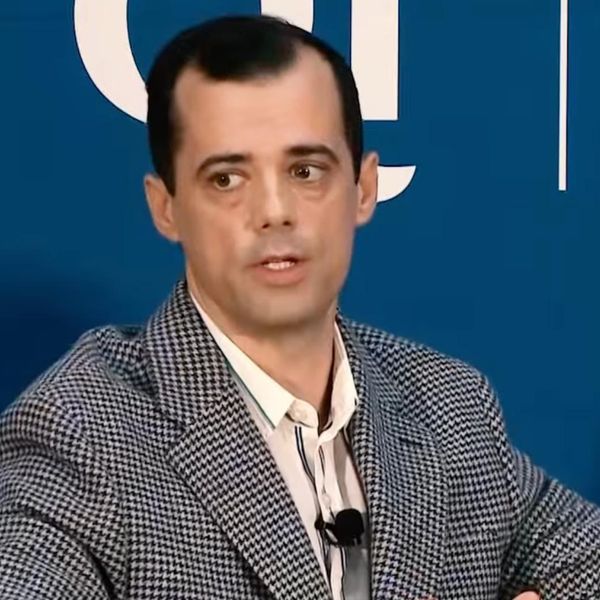In 2016, the Obama administration negotiated a memorandum of understanding with the Israeli government that pledged a historic and unprecedented $38 billion of security aid over 10 years. The figure of $3.8 billion per year was not arbitrarily chosen nor did it reflect a simple bump up from previous level of $3.1 billion in annual assistance. It was carefully calculated by the Obama administration after a thorough assessment of Israel's real defense needs.
As a result of that deliberative, fact-based process, the MOU now in effect contains a specific pledge of $500 million every year for missile defense alone, included specifically in response to tragically frequent outbreaks of violence and rocket attacks in the years since Hamas took control of the Gaza Strip. The Obama administration calculated and pledged this new and additional assistance specifically to cover future outbreaks of violence in which Israel would need to rely on and replenish missile defense systems vitally important to protecting Israelis like Iron Dome, so that Israel would not have to come back to the U.S. government seeking extraordinary appropriations as it did in 2014.
It is therefore surprising that some in the Israeli government are reportedly seeking as much as an additional $1 billion — on top of the amounts pledged in the MOU — for the exact resupply of materiel already contemplated and covered by the MOU. Some reports have suggested that a portion of a possible request may be to cover the cost of additional munitions such as precision guided bombs as well.
The relevant question in considering such a request isn’t whether Iron Dome or generous U.S. assistance to help cover its costs is a worthy expenditure — the pledge in the MOU and unfailing annual appropriations rightly and definitively answer those in the affirmative. Rather, the question is whether a wealthy country like Israel actually needs an additional $1 billion from a partner already struggling to meet the myriad needs of its own citizens in difficult times to pay for it.
Secretary of State Antony Blinken has publicly stated the Biden administration’s commitment to ensuring Israel is able to replenish Iron Dome and that the details are currently under review. The process of making good on this promise provides an opportunity for a real discussion about what the United States’ existing commitments are and what its priorities should be for any additional funding.
The current MOU specifically states that, “Based upon their comprehensive discussions, both sides jointly commit to respect the missile defense funding levels specified in this MOU, and Israel commits not to seek additional missile defense funding from the United States for the duration of this understanding, except in exceptional circumstances as may be jointly agreed” by both countries. It’s a tragic reality that as horrifying as the loss of life in last month’s violence was, rounds of fighting between Israel and Hamas are not exceptional and are often even more deadly and destructive, which is precisely why the current MOU contains an unprecedented commitment of U.S. missile defense aid to Israel. What is exceptional would be the amount of new assistance given to a country with as much ability to pay for its own additional military needs as Israel.
With so many important national security and foreign policy funding priorities — not to mention domestic needs — nearly $4 billion in annual aid is already a generous contribution by U.S. taxpayers to a country with a per capita GDP higher than each of France, Japan, and the United Kingdom. The additional $1 billion Israel will reportedly request would, to put it in context, be more than the United States spends on Nonproliferation, Anti-Terrorism & Demining Assistance globally ($890 million in Fiscal Year 2021), and more than twice what the U.S. government spends on each of direct contributions to NATO ($420 million in 2019) and on the entire Peace Corps ($410.5 million in FY2020). It would be more than three times what the Veterans Administration spends on veterans suicide prevention programs ($310 million in FY2021).
If U.S. taxpayers were to spend an extra $1 billion to help secure Israel from Hamas rockets and other acts of terrorism on top of existing support for its missile defense systems, a priority for additional funding should be programs that address the root causes of the cycle of violence and help erode Hamas’s power. Bold but practical plans to rebuild Gaza’s infrastructure and economy in a way that will empower ordinary Palestinians in the territory rather than Hamas, such as the Center for a New American Security’s proposal, lay waiting to be taken off the shelf and implemented. Peace-building programs that undermine extremism through people-to-people and other civil society initiatives could and should be prioritized for substantial new funding through an international fund for peace based on the Northern Ireland model and envisioned by the historic, bipartisan Middle East Partnership for Peace Act.
The massive gap between what the United States invests in addressing the situation underlying the conflict and what it spends trying to remediate the violence that results from its perpetuation becomes especially clear in light of the fact that a modest $75 million in relief for Palestinians already appropriated by Congress is currently being held up by Republican lawmakers under the guise of supporting Israel’s security. The Biden administration and congressional majorities must break this unconstructive cycle and give due priority in U.S. funding to countering the deepening occupation and other catalysts for unending conflict. Ultimately, there is no military solution to the conflict, and addressing its root causes is the only way to prevent further rounds of rocketfire and other violence.
At the same time, the Israeli government should understand that even strong friendships risk being hurt when one party is constantly giving, while the other repeatedly pushes against agreed boundaries to seek more. It is undeniable that aid to Israel is coming under greater scrutiny by American taxpayers and their representatives. Those of us who advocate in support of funding for Iron Dome and all the aid pledged in the MOU — including more assistance if Israel truly needs it — are facing increasing skepticism from a growing number of voters and lawmakers who wonder why Israel needs additional U.S. money when it is spending vast sums building illegal settlements in occupied Palestinian territory. The new government in Israel should therefore carefully weigh its asks of the United States with a view to maintaining rather than straining the critical strategic alliance between our two countries.
















